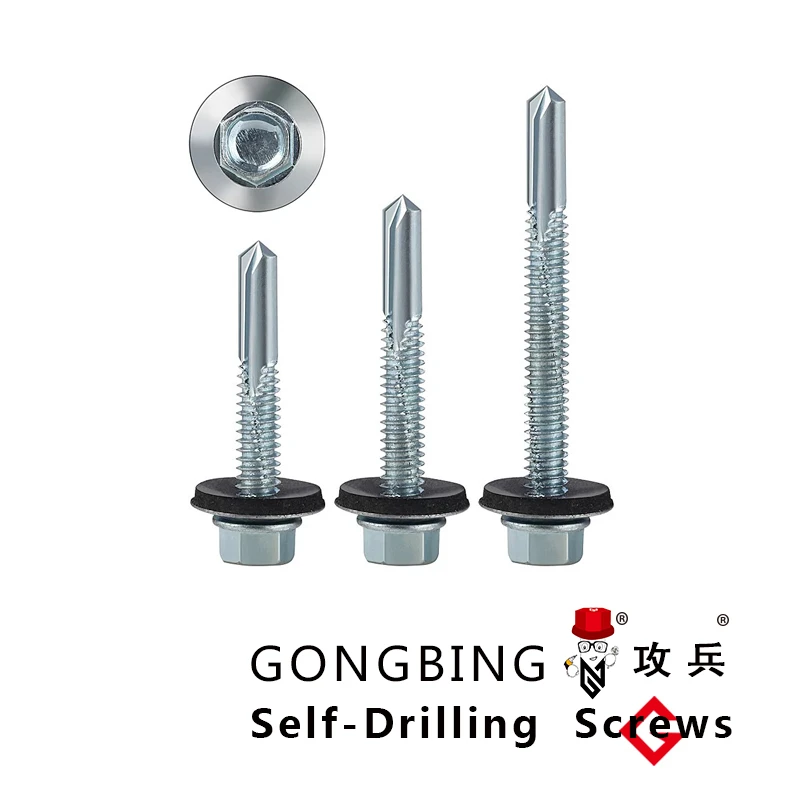flat head tek screws
Understanding Flat Head Tek Screws An Essential Component in Construction
Flat head Tek screws are a pivotal element in the world of construction and manufacturing, playing a significant role in various applications. These specialized fasteners are designed for metal-to-metal and metal-to-wood connections, providing a reliable solution that meets the demanding requirements of structural integrity and durability. This article delves into the many facets of flat head Tek screws, their advantages, applications, and considerations for optimal use.
What Are Flat Head Tek Screws?
Flat head Tek screws are self-tapping screws featuring a flat or countersunk head that allows them to sit flush with the surface of the material being fastened. The distinguishing feature of Tek screws is their sharp, drill-like point, which enables them to create their own hole in material without the need for pre-drilling. This design significantly reduces installation time and labor costs, making them a popular choice in both industrial and residential projects.
Benefits of Using Flat Head Tek Screws
One of the primary advantages of flat head Tek screws is their ease of installation. The self-tapping capability allows for quick and efficient fastening processes, which is particularly beneficial in high-paced construction environments. Additionally, the flat head design ensures a neat finish, reducing the risk of snagging and providing a professional appearance.
Moreover, Tek screws are available in various materials, including stainless steel and galvanized steel, which offer enhanced corrosion resistance. This makes them suitable for outdoor applications or environments with high humidity. The versatility in material selection also allows builders and manufacturers to match the screws with their specific project needs, ensuring both performance and longevity.
Applications of Flat Head Tek Screws
flat head tek screws

Flat head Tek screws find their applications across a wide range of industries. In construction, they are commonly used for fastening metal roofing, siding, and other structural components. Their ability to penetrate through thick materials makes them ideal for heavy-duty applications where traditional screws may fall short.
In the manufacturing sector, Tek screws are utilized in assembling machinery and fixtures, providing a stable and secure connection that withstands considerable stress and vibration. Additionally, they are frequently employed in automotive and aerospace industries, where reliability and performance are critical.
Considerations for Optimal Use
While flat head Tek screws offer numerous benefits, it is crucial for users to consider several factors to ensure optimal performance. Firstly, the choice of screw length and diameter is essential; selecting the wrong size can lead to weak connections or damage to the material. It is also important to match the screw material with the environmental conditions—the use of stainless steel in coastal areas, for example, enhances corrosion resistance.
Proper installation techniques are equally important. Using the correct torque settings when driving in the screws can prevent stripping and ensure a strong bond. Additionally, the choice of tools—such as impact drivers versus traditional drills—can also affect the installation quality and speed.
Conclusion
In conclusion, flat head Tek screws are an essential fastener in both construction and manufacturing, offering reliability, efficiency, and versatility. Their unique self-tapping design and flat head allow for quick installation while ensuring a flush finish. With the right selection, material considerations, and installation techniques, flat head Tek screws can significantly enhance the quality and durability of any project, making them a top choice among builders and engineers alike.
-
Weatherproof Plastic Expansion Anchors for OutdoorNewsJun.06,2025
-
Sustainability in the Supply Chain: Eco-Friendly TEK Screws ProductionNewsJun.06,2025
-
Load-Bearing Capacity of External Insulation FixingsNewsJun.06,2025
-
Double Head Bolts: Enhancing Efficiency in Industrial MachineryNewsJun.06,2025
-
Corrosion Resistance in Chipboard Screws: Coatings for Wholesale DurabilityNewsJun.06,2025
-
Butterfly Toggle Bolts : Enhancing Structural ResilienceNewsJun.06,2025
